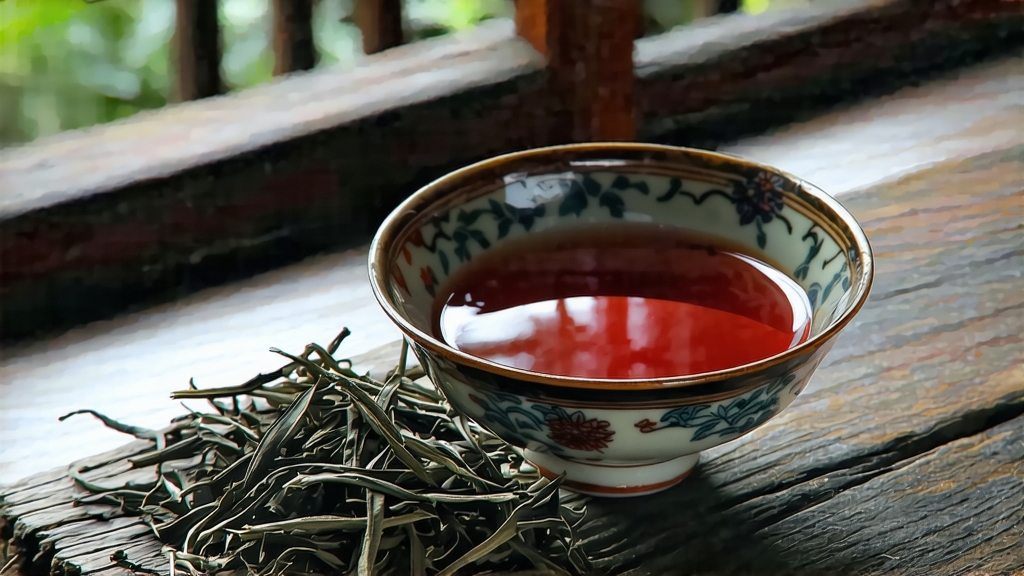
When European tea caravans first reached the bustling ports of Amsterdam and London in the early 1600s, the dark, tightly-twisted leaves they carried were unlike anything the continent had tasted. The brew glowed crimson in porcelain, exhaled a campfire perfume, and left a sweet, long finish that sailors described as “the scent of China itself.” That tea was Lapsang Souchong, the original black tea of the world, born in the rocky Wuyi Mountains of northern Fujian province. Today, while Keemun, Assam and Ceylon have become household names, Lapsang remains the quiet ancestor—smaller in yield, bigger in legend—whose very aroma tells the story of how black tea began.
History: From Misty Cliffs to Global Cups
Local folklore claims the style was discovered by accident during the late Ming dynasty. A Qing army unit, so the tale goes, commandeered a tea hamlet near Tongmu Pass to camp for the night. The farmers, anxious that their freshly picked leaves would spoil, rushed the withering process by drying them over pinewood fires. The resulting tea, darkened and fragrant, was presented the next morning to passing Dutch traders who immediately paid double. Whether myth or marketing, the story captures two truths: the urgent ingenuity of Wuyi tea makers and the foreign appetite for this new, fully-oxidized leaf. By 1667 the East India Company listed “Bohea Souchong” in its ledgers; Samuel Pepys drank it; Queen Victoria reportedly mixed it with whisky. In China the tea was never called “black”—the term hong cha, “red tea,” refers to the color of the infusion—but in the West it became the template for every black tea that followed.
Terroir: Why Only Tongmu Can Birth True Lapsang
The Wuyi range is a UNESCO World Heritage site of vertical cliffs, mineral-rich igneous rock, and a subtropical monsoon climate that traps fog until noon. Within this range the 12-square-kilometer Tongmu Guan (literally “Pass of the Wooden Cave”) is a micro-valley sealed on three sides by 1,200-metre peaks. Here the average humidity stays above 80 %, the diurnal temperature swing can exceed 15 °C, and the soil is a crumbling purple sandstone laced with quartz. Such conditions slow the growth of the small-leaf tea cultivar xiao ye zhong, concentrating sugars and volatile aromatics that later marry with pine smoke. Chinese law designates Tongmu as a protected origin; leaves picked outside the pass may be smoked, but they cannot legally be sold as Zheng Shan Xiao Zhong (“Original Mountain Small Leaf”), the tea’s official name.
Varieties: Smoke, No Smoke, and Everything Between
- Traditional Song Zhong Lapsang: Crafted entirely from 300-year-old Song dynasty arbors growing wild on the cliffs. The leaf is small, olive-black, with a golden tip frequency below 5 %. The smoke is subtle—more incense than barbecue—because only aged Masson pine is used, and the firing is brief.
- Classic Pine-Smoked Lapsang: The export style that built the brand. After oxidation, leaves are spread on bamboo trays suspended over a pinewood pit fire. Fresh resinous logs are added hourly, forcing aromatic phenols into the leaf for 8–10 hours. The finished tea carries a tarry sweetness reminiscent of lapsang whisky or smoked paprika.
- Unsmoked Zheng Shan Xiao Zhong: A 21st-century response to consumers who love the honeyed malt but not the campfire. The same leaf is baked over hot bamboo charcoal instead of pine, yielding a burgundy liquor tasting of longan fruit, cacao and mineral rock.
- Jin Jun Mei: A gold-tips offshoot created in 2005 by master Jiang Yuanxun. Only buds picked in the first three days of April are used. They are withered on bamboo over a gentle charcoal ember, then oxidized in rolling drums at 26 °C. The cup is brisk, sparkling, with notes of caramelized peach and Sichuan pepper. Though often marketed separately, Jin Jun Mei is technically a bud-only expression of Lapsang terroir.
Craft: Turning Green Leaf into Smoked Memory
The process begins before dawn, when pickers climb bamboo ladders lashed to cliffside trees. Standard is one bud plus the first two leaves, about 30 % moisture content. The leaf is then